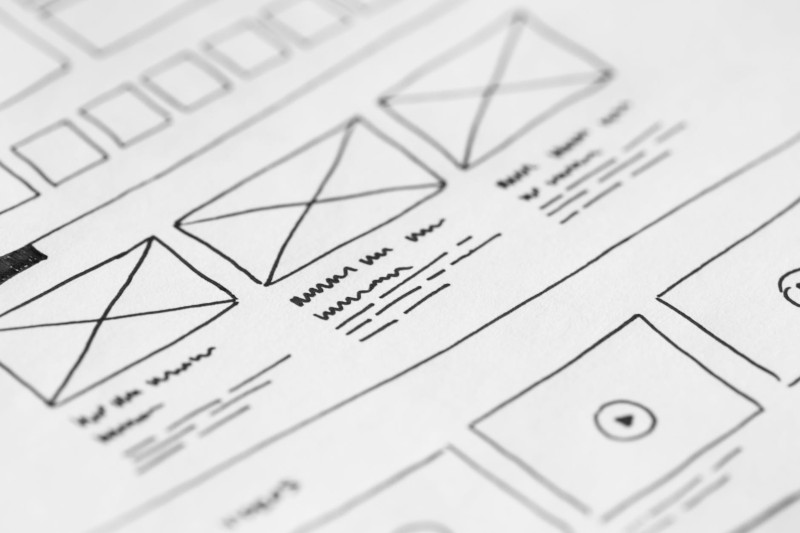What Is UX Design?
Jobs in tech are always changing, which usually means you have plenty of options if you’re looking to make a career switch. You’ve probably heard of user experience (UX) design, an increasingly popular career choice with a wealth of opportunities for engaging and well-compensated work. But what is UX design? And why would you want to become a designer?
UX refers to a user’s overall experience when using and navigating a product or service, such a software application. In short, the field of UX design strives to design systems that are easy and pleasant to use.
That seems simple enough in theory, but effective design involves a constellation of skills, tools, and attitudes, which we teach in our UX/UI design bootcamp.
Let’s go into a bit more detail.to figure out exactly what is UX design.
Why Is UX Design Important?
The rising popularity of UX design reflects a shift in the way many companies are thinking about their products and the way users interact with them.
In the past, many products or software systems were often designed in a way that was undirected and not properly informed by the needs and habits of users themselves. As time went on, the community realized the folly of this approach and developed methods for building beautiful, easy-to-use, and informative designs.
For users, the benefits are obvious, but companies have much to gain as well. When users are able to easily and efficiently use your products and have a good time doing it, they’re more likely to keep using them, recommend them to others, and purchase more of them in the future.
UI vs UX Design: What’s the Difference?
The distinction between user interface (UI) and UX design is a common source of confusion. Both fields concern the design of interfaces with an eye toward how humans interact with them.
Although the two have areas of overlap, the most important difference between UI and UX comes down to scope.
UI design generally focuses on the elements that make up the interface and the technical details of implementing it. On the other hand, UX design has a broader reach, including UI itself but going beyond it to consider the user’s entire experience while dealing with the interface.
For UX/UI design professionals, it makes sense to learn skills from both areas to be as versatile as possible and maximize their employability.
UX Design Best Practices
Let’s look at some UX design best practices to give you an idea about what is expected of a good designer.
1. Do Your Research
Research is one of the most crucial parts of the design process. Instead of jumping in without thinking, a little work up front to properly investigate your application’s needs will lead to a better design and will end up saving time down the line.
Effective research involves defining the needs of the design and requires careful study of users and their habits. This can involve creating user personas and gathering information from a variety of sources, including user interviews, surveys, or direct testing.
2. Use a Well-Defined Process
A solid UX design process is another linchpin of effective design. As with research, it can be tempting to skip certain aspects of a formal process and begin designing in a haphazard way, but this can make it harder in the long run.
Following a consistent, well-defined process helps ensure that you meet all of your requirements and keeps your workflow smooth and efficient.
3. Keep it Simple
Overly complex designs are a cardinal sin in modern UX practice. When users are presented with a convoluted interface or given too much to remember at once, it impedes their experience with the app and makes them less likely to return to it. Simple and intuitive designs are more effective and pleasing to use.
Along with simplicity, consistency is important in your interface designs to avoid confusing users. For instance, similar functionality should be accessed in similar ways in different parts of the application. The user should not have to learn multiple ways of accomplishing the same task.
4. Give Users Lots of Feedback
Users become frustrated when they don’t understand what is happening while they interact with your software.
For example, if a request will take more than a moment to fulfill, a simple indicator in the form of a loading bar or spinning animation is far preferable to freezing the interface. If the application seems to be unresponsive, a user can be led to believe that the request has failed or that the app has completely crashed. On top of being misleading, this causes negative emotions in the user.
5. Emphasize Accessibility
In the past, developers tended to largely ignore accessibility concerns, leading to software that could be difficult or even impossible to use for those with disabilities. Nowadays, most companies see the value in making their software as accessible as possible.
The US government’s Accessibilty for Teams website suggests that an inclusive design mentality is at the core of accessibility. Designers should know about the different classes of disabilities, such as hearing, vision, motor problems, and cognitive disabilities.
By fostering an awareness of disabilities and the effects they can have on users navigating your application, you can create designs that offer a frictionless experience for individuals of all ability levels.
6. Be Flexible
Although you should follow a consistent process, you may realize at several points in your design process that an earlier idea or plan no longer fits the current vision for the design.
When that happens, you should be prepared to change course as needed to make your design as effective, natural, and easy-to-use as possible. Becoming overly attached to your early ideas can hinder your design efforts.

What Does a UX Designer Do?
If you asked five different UX designers, “What is UX Design?”, you could very well receive five strikingly different answers. Since every product or service has different needs, the demands of the job can vary from one company to the next.
That said, there are some common elements that apply to most positions.
While exact methodologies might differ, every process will involve the following at some level:
- Understanding and researching the user
- Prototyping and testing
- Implementing designs
- Validating results
- Iterating on the above
How to Become a UX Designer
On top of being a young and steadily changing profession, UX design is a multifaceted job that combines skills and aptitudes from a variety of areas. It draws from various academic fields, including psychology and human-computer interaction.
All of this can seem overwhelming to a would-be designer. In reality, the interdisciplinary nature of the field can make it easier to enter. Career changers can leverage their existing skills and experience in a new context. And for young aspirants, the lack of established barriers to entry make it an accessible career to enter for those with the right skills.
A report by Nielsen Norman Group found that most UX design professionals do not have a degree related to design. Moreover, while the majority (82%) of designers did have a degree of some kind, a sizable minority had no undergraduate degree.
One of the best ways to get a solid grounding in the fundamentals is to enroll in a UX design course like Coding Dojo’s Online Part-Time Bootcamp.
Top 6 Must-Know UX Design Skills in 2022
Here are some important UX design skills that you’ll want to be familiar with to boost your chances at landing a position.
1. Collaboration
User experience design is a heavily collaborative process, which means you’ll be in regular contact with other designers, developers, and even users. As a result, you’ll need strong communication skills and an openness to feedback and criticism.
Effective communication also requires mastery of common collaboration tools like Zoom, Trello, or the Google Docs suite.
2. Traditional Design Skills
Although UX design encompasses more than just conventional design, user interface design and user experience design are intimately related. This means that UI design skills form an important part of any would-be UX designer’s toolkit. These can include:
- Wireframing and mockups
- Typography
- Use of colors
- Current web-design fundamentals like responsive design.
3. UX Design Software
Though UX designers can use a variety of software to do their work, some common ones have become especially prominent. For example, Figma and Sketch are great for effective prototyping and collaborative design. Collaboration tools like FigJam and Miro make it easy to bounce ideas off your colleagues within a visual whiteboard environment.
4. User Flows
To optimize users’ experience with your application, it’s important to map out exactly how they interact with it. That’s the purpose of user flows.
Typically represented in a flow chart format, they clearly mark out the path your users take as they navigate your application. User flows make it easy to see at a glance the decisions that users face as they use the app, helping you create better, more intuitive designs.
5. Rapid Prototyping
In recent years, the practice of software engineering has favored rapid, flexible development. There’s been a movement away from doing too much extensive up-front planning and toward the practice of quickly testing new ideas and adapting new approaches on-the-fly when needed.
In many ways, UX design reflects these trends, too. Designers must master an iterative process:
- Quickly mocking up prototypes based on given requirements
- Testing them with users and stakeholders
- Collecting feedback
- Reviewing and revising designs
6. Do You Need to Learn Coding for UX Design?
Prospective UX students often wonder whether they need any programming or software development skills to be a UX designer. In short, the answer is no: most employers would not expect their designers to have programming skills.
That said, at the end of the day, software is written in code, so it can be useful to know a little bit. For example, web design makes heavy use of HTML, CSS, and JavaScript, so some knowledge of those technologies can help you understand how the systems you are designing really work.
Some coding knowledge can also make it easier to communicate with the developers and other technical people involved in engineering the application – which, as we’ve seen, is a crucial part of the user experience design process.
How Much Do UX Designers Make in 2022?
While salaries vary across regions and companies, UX design has proven to be a lucrative career.
According to Indeed, UX designers in the United States make an average of $88,396 in base salary, and intermediate designers with three to five years of experience earn an average of $106,754.
What’s more, these numbers are steadily trending upwards. It’s clear that UX design skills offer a handsome return on investment in the current job climate.
Why Choose Coding Dojo’s UX Design Course
If you’re looking to start a career in UX Design, our bootcamp offers an unbeatable jumping-off point. Bootcamps are a proven way to obtain jobs in tech, and UX design is no exception.
Our program gives you a solid foundation in the most important skills you need to succeed in your future career. Coding Dojo’s UX/UI Bootcamp gives you real-world experience and the chance to work with a real client and complete a portfolio of work.
Conclusion
So, what is UX design? In this article, we’ve discussed how UX relates to the user’s entire experience interacting with a product or application, with a focus on ease of use and efficiency as well as subjective factors like aesthetics and pleasant emotions.
UX designers have many tools at their disposal, including design-specific software like Figma as well as general collaboration and research tools.
The design process involves a number of iterative tasks, including research on user needs and intent, rapid prototyping and mockups, testing and validation. UX design is an exciting and lucrative career choice. If you’re interested in pursuing new opportunities, learn more about our online part-time bootcamp.

